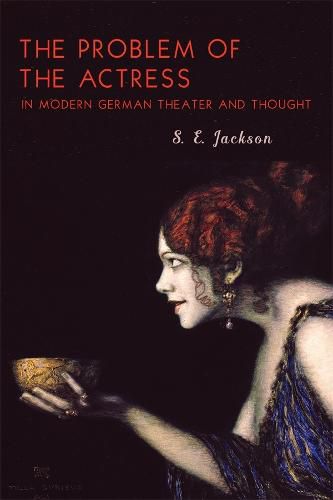Readings Newsletter
Become a Readings Member to make your shopping experience even easier.
Sign in or sign up for free!
You’re not far away from qualifying for FREE standard shipping within Australia
You’ve qualified for FREE standard shipping within Australia
The cart is loading…






Around 1900, German and Austrian actresses had allure and status, apparent autonomy, and unconventional lifestyles. They presented a complex problem socially and aesthetically, one tied to the so-called Woman Question and to the contested status of modernity. For modernists, the actress’s socioeconomic mobility and defiance of gender norms opened space to contest social and moral strictures, and her mutability offered a means to experiment with identity. For conservatives, on the other hand, female performance could support antifeminist convictions and validate masculine authority by positing woman as nothing but a false surface shaped by productive male forces. Influential male-authored texts from the period thereby disavowed female subjectivity per se by equating woman and actress.
S. E. Jackson establishes the actress as a key figure in a discursive matrix surrounding modernity, gender, and subjectivity. Her central argument is that because the figure of the actress bridged such varied fields of thought, women who were actresses had a consequential impact that resonated in and far beyond the theater - but has not been explored. Examining archival sources such as theater reviews and writing by actresses in direct relation to canonical aesthetic and philosophical texts, The Problem of the Actress reconstructs the constitutive role that womenplayed on and off the stage in shaping not only modernist theater aesthetics and performance practices, but also influential strains of modern thought.
$9.00 standard shipping within Australia
FREE standard shipping within Australia for orders over $100.00
Express & International shipping calculated at checkout
Around 1900, German and Austrian actresses had allure and status, apparent autonomy, and unconventional lifestyles. They presented a complex problem socially and aesthetically, one tied to the so-called Woman Question and to the contested status of modernity. For modernists, the actress’s socioeconomic mobility and defiance of gender norms opened space to contest social and moral strictures, and her mutability offered a means to experiment with identity. For conservatives, on the other hand, female performance could support antifeminist convictions and validate masculine authority by positing woman as nothing but a false surface shaped by productive male forces. Influential male-authored texts from the period thereby disavowed female subjectivity per se by equating woman and actress.
S. E. Jackson establishes the actress as a key figure in a discursive matrix surrounding modernity, gender, and subjectivity. Her central argument is that because the figure of the actress bridged such varied fields of thought, women who were actresses had a consequential impact that resonated in and far beyond the theater - but has not been explored. Examining archival sources such as theater reviews and writing by actresses in direct relation to canonical aesthetic and philosophical texts, The Problem of the Actress reconstructs the constitutive role that womenplayed on and off the stage in shaping not only modernist theater aesthetics and performance practices, but also influential strains of modern thought.